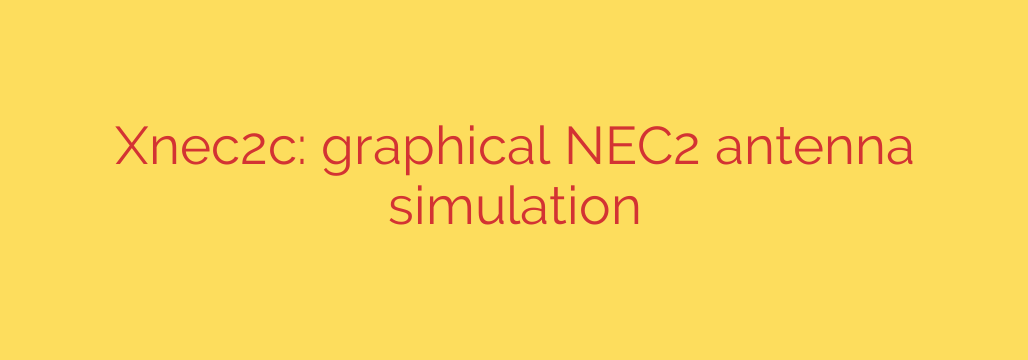
Optimizing antenna design and predicting performance is crucial for radio enthusiasts, engineers, and researchers. While powerful modeling software like NEC2 exists, interacting with its command-line interface can be challenging, especially when visualizing complex structures and results.
Fortunately, tools are available that provide a user-friendly graphical interface to the robust NEC2 engine. These interfaces significantly simplify the process of setting up antenna models, running simulations, and analyzing the output data. Users can visually define antenna geometry, specify wire segments, sources, and loads with ease.
Such software makes it simple to explore different antenna configurations. You can quickly adjust parameters like wire lengths, spacing, and materials to see their impact on key performance indicators. The graphical interface allows for instant visualization of the antenna structure itself, helping identify potential errors in the model before running time-consuming simulations.
Beyond setup, these graphical tools excel at presenting the simulation results. Instead of sifting through raw text files, users can view radiation patterns in 2D or 3D plots, examine impedance curves, SWR charts, and analyze current distribution along the antenna elements. This visual feedback is invaluable for understanding how an antenna behaves and optimizing its design for specific applications.
Leveraging a graphical NEC2 interface streamlines the entire antenna simulation workflow. It lowers the barrier to using sophisticated modeling software, making advanced antenna analysis accessible to a wider audience. Whether you are designing a simple dipole or a complex Yagi array, a good graphical interface simplifies the process, allowing you to focus on the physics and performance of your antenna. This integration of powerful simulation capabilities with intuitive visualization is essential for effective modern antenna design.
Source: https://www.linuxlinks.com/xnec2c-graphical-nec2-antenna-simulation/








